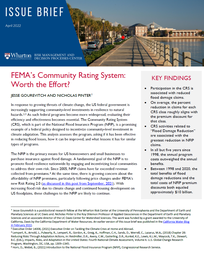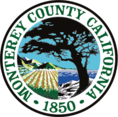|
MAY 2022
This year's “Next Generation of Resilience" Student Showcase proved that we have very capable young people who can make our nation more resilient. On April 27, four students shared their unique perspectives on defining resilience and where we can grow as we look ahead. We were pleased at how inclusive and action-oriented the discussion was. We believe that students are the future leaders, critical thinkers and decision makers for the equitable community resilience we hope to achieve.
We strongly encourage our partners to think about the communities you serve and how to incorporate equitable and accessible resources for everyone in your community. We all have a job to do as leaders and change makers. Let’s do our part to ensure we are all actively engaged in resilience – in ideation, creation and practice.
Sincerely,
The Resilient Nation Partnership Network team
|
-
Featured Event: RNPN: Resilience Exchange – Tribal Perspectives on Resilience, May 25 at 1 p.m. ET
-
FEMA: Back2Basics With Mike Segner: How Do I Prepare My Community for a Storm?, May 18 at 12 p.m. ET
-
American Society of Adaptation Professionals and Parametrix: Co-Creation Webinar Series – The Adaptation + Mitigation Nexus: Transportation Innovations, May 18 at 12 p.m. ET
-
SpeaknSpark: Where Will People Go? Climate-induced Relocation – From Retreat to Mitigation, May 19 at 2 p.m. ET
-
Resilience 21: Town Hall – New Bi Partisan Bill to Advance Resiliency, May 19 at 5 p.m. ET
-
Majestic Collaborations and The Folk Alliance International: Art of Mass Gatherings in Kansas City, May 22 at 10:30 a.m. ET
-
Silver Jackets and USACE National Flood Risk Management Program: State Flood Resilience and Adaptation Planning, May 23 at 2 p.m. ET
-
American Security Project: rEVolution: The Future of Electric Vehicles (EVs) and the Military, May 25 at 12 p.m. ET
-
Association of State Floodplain Managers: Planning Information Exchange (PIE) Webinar – New Research on State Resilience Planning Practices, May 26 at 12 p.m. ET
-
Environmental Law Institute: Equity-Centered Local Climate Action Planning, May 26 at 1 p.m. ET
-
American Security Project: The Cost of Climate Change, May 26 at 4:30 p.m. ET (In-Person, Norfolk, VA)
-
Majestic Collaborations and The Madonnari Italian Street Painting Festival: Art of Mass Gatherings in Santa Barbara, May 28 at 3:30 p.m. ET
-
National Academies of Sciences, Engineering, and Medicine: Workshop on Compounding and Cascading Events, May 31 at 11 a.m. ET
-
Enterprise Community Partners: Funding Climate Risk Reduction for Affordable Housing, June 1 at 2 p.m. ET
-
Sustainable Solutions Lab: Climate Adaptation Forum – Can the Northeast Handle the Heat?, June 3 at 8:30 a.m. ET
-
NOAA: Seven Best Practices for Risk Communication, June 7 at 2 p.m. ET
-
USACE: The Corps Water Infrastructure Financing Program, June 14 at 2 p.m. ET
-
USDA Southern Plains Climate Hub, Kansas Forest Service and Kansas State University: Managing Carbon Through Healthy Forests and Forest Products in the Changing Climate of the Southern Plains, starting June 21 at 11 a.m. ET
-
RNPN, Arizona State University and University of Arizona: Ideation Hour – Extreme Heat Resilience, June 29 at 1 p.m. ET
-
Natural Hazards Center: Workshop – Changing Climates: Equity and Adaptation in a Warming World, starting July 10
-
Natural Hazards Center: Researchers Meeting – Back to the Field? Hazards and Disaster Research Following the Pandemic, starting July 13
-
Natural Hazards Center: Practitioners Meeting – Engaging Low Capacity Communities with Practical and Equitable Risk Reduction and Resilience Solutions and Support, July 14
-
The Wild Center: Summer Climate Change Institute for Educators, starting July 25
-
The Wild Center: Youth Climate Leadership Retreat, starting August 9
-
SpeaknSpark: The Intersection of Disasters and Climate Change, August 18 at 2 p.m. ET
-
NOAA: Seven Best Practices for Risk Communication, August 24 at 3 p.m. ET
|
Partner News
RNPN: Resilience Exchange on Tribal Perspectives on Resilience
 Join the Resilient Nation Partnership Network and The Institute for Tribal Environmental Professionals (ITEP) on Wednesday, May 25 at 1 p.m. ET. We will discuss tribal perspectives on resilience. This event is open to all. If you know of any organizations or people who would be interested in joining, feel free to spread the word.
Our featured speakers include:
- Nikki Cooley, Diné Nation; Indigenous Scientist and Educator; Co-Manager, Tribes & Climate Change Program, ITEP
-
James Charles, President, Volya Innovative Solutions; Consultant for Seminole Tribe of Florida Tribal Historic Preservation Office and Environmental Resource Management Department
-
Amelia Marchand, Co-Creator, L.I.G.H.T. Foundation and Public Voices Fellow on the Climate Crisis
-
Althea Walker, Nez Perce/Hopi/Gila River; Co-Director and Community Resilience Lead, Climate Science Alliance
-
Kenneth Weitzel, Natural Resource Specialist, Central Council of the Tlingit and Haida Indian Tribes of Alaska
The Trust for Public Land: The Role of Parks in Disaster Planning, Recovery and Response
Natural disasters are becoming more frequent and more severe as the climate crisis accelerates. Billion-dollar disasters are increasing, and in 2021 alone, we experienced 20 such weather-related disasters, causing $145 billion in damages. Parks can have a positive impact before, during and after a disaster strikes.
American Security Project: Climate Security in Focus Blog Series
Climate Security in Focus is a blog series dedicated to exploring key elements of climate security that impact American interests both at home and abroad. The series aims to examine specific aspects of climate security issues in order to better understand climate policy challenges, facilitate conversation and generate ideas. Highlighted articles include:
Resilience Innovation Hub: Resilient Citizens Corp Initiative Launched in Houston to Address Training Opportunities in Resilience
Alongside Houston Community College’s announcement of the new Resiliency Center of Excellence and Operations Training Facility, Resilience Innovation Hub launched the Resilient Citizens Corp Initiative to package and deploy certifications and courses to a new generation of leaders across regions to accelerate preparedness by filling gaps in training and workforce development. The focus is to address the Mayor’s Resiliency Report calling for over 500,000 Houstonians to be trained in resilience – pre-disaster preparedness and risk mitigation.
The Climate Resilience Fund (CRF): Four Projects Awarded Grants Through the 2021 Coordination and Collaboration in the Resilience Ecosystem Program (CCRE)

The CRF and its partners at the NOAA Climate Program Office annually convene climate adaptation and resilience experts from across the resilience ecosystem in open formats designed to elicit input for grantmaking priorities. In 2020-21, participants identified four topic areas which became the focus of the 2021 grant competition. Grantees also worked in collaboration with the NOAA Climate Resilience Toolkit team to incorporate their findings and guidance into a Community-Based Adaptation and Resilience Practitioners Guide that will be published by NOAA later this year.
|
Tulane Awarded Grant To Strengthen Resilience of Disaster-prone Communities
Tulane’s Disaster Resilience Leadership Academy received a $750,000 award from the Walmart Foundation to help empower vulnerable Louisiana communities to become disaster-ready in the face of climate change by helping them better understand how to unlock financial resources.
Association of State Floodplain Managers (ASFPM): Reduce Flood Risk Website Now Live

Launched on May 16, ASFPM developed Reduce Flood Risk to help property owners and buyers in floodprone areas make informed decisions around the flood mitigation actions they can take today to protect their homes, businesses and neighborhoods from flooding in the future. It can also connect anyone looking to reduce their flood risk with mitigation information and resources. It is essentially an interactive library of flood mitigation strategies and resources. Users can simply answer a few questions to get mitigation strategies tailored to their home or property type.
|
|
Updates from the Wharton Risk Center
|
Federal Disaster Assistance: An Overview of Post-Disaster Program
This primer explains the main federal post-disaster programs managed by the Federal Emergency Management Agency(FEMA), the Small Business Administration, and the Department of Housing and Urban Development, and it offers insight on the current system and suggestions for policy reform so that disaster aid better serves those most in need.
|
 FEMA’s Community Rating System: Worth the Effort?
In response to growing threats of climate change, the U.S. federal government is increasingly supporting community-level investments in resilience to natural hazards. As such federal programs become more widespread, evaluating their efficiency and effectiveness becomes essential. This issue brief analyzes the Community Rating System (CRS), which is part of the National Flood Insurance Program (NFIP), by discussing if it has been effective in reducing flood losses, how it can be improved, and what lessons it has for similar types of programs.
|
The National Flood Insurance Program: A Primer
The Wharton Risk Center’s most recent primer gives an overview of the NFIP. The NFIP is a federal program providing flood insurance to residents of participating communities. Created in 1968, communities can voluntarily join the program, adopting baseline floodplain management regulations, and then all residents—homeowners, renters and businesses—are eligible to purchase a flood insurance policy. The program, now housed in FEMA, also maps flood risks, helps educate residents about flooding, and supports flood risk reduction through grants, outreach and incentives.
|
|
|
|
|
EDF Blog: Environmental Bond Gives New York A Once-in-a-Generation Opportunity To Fund a More Climate Resilient Future
New York just included a $4.2 billion Bond Act ballot measure that enables historic investments in the environment. Environmental Defense Fund’s Kate Boicourt explains how it puts the state on a path to resilience while creating jobs and benefiting the state’s most vulnerable communities.
Read more here
|
University of Bristol: Scientists Identify the Most Extreme Heatwaves Ever Recorded Globally
A new study has revealed the most intense heatwaves ever across the world – and remarkably some of these went almost unnoticed decades ago. The research, led by the University of Bristol, also shows heatwaves are projected to get hotter in future as climate change worsens.
Read more here
|
|
|
Updates from the Union of Concerned Scientists
Puerto Rico Deserves Full Benefits of Biden’s Justice40

Implementing Justice40 in disadvantaged communities in Puerto Rico can help strengthen infrastructure and increase the resilience of Puerto Ricans, but it requires an approach that considers the specific population and infrastructure vulnerabilities as well as climate and energy challenges that shape population disadvantage in the territory.
|
Summer Heat Is Coming: Will New Policies Protect Workers?

Each year, summer-like temperatures arrive all too soon during spring, thanks to human-induced climate change. Research finds that even if we halt heat-trapping emissions, we’ll be locked into a summer season that consumes half of the year by 2100. While that may seem far in the future, the current conditions are enough to cause alarm.
|
Climate Change Is Turning California’s Wildfire Season into Wildfire Year

Climate change has disrupted historical trends and created conditions for year-round wildfires. Forests are roughly 50% drier, and the number of days of high fire danger have increased and are projected to double by the end of the century. This is layered on top of dangerous forest conditions that stem from a legacy of fire suppression and forest management that has increased the amount of vegetation available to burn.
|
Central Valley Farmworkers: Surviving Extreme Heat While Feeding the U.S.

Climate change will worsen heat exposure for the Central Valley’s outdoor workers. By mid-century, with no action to reduce global emissions, Central Valley counties would experience more than 30 days per year with a heat index above 100°F, meaning about 1 month per year of such conditions.
|
Technical Assistance Available
Enterprise Community Partners: Climate Resilience Academies

These regional, cohort-based learning opportunities are for multi-family affordable housing owners, operators and developers to engage with one another, content experts and local stakeholders to address the unique hazards of their region. Together, participants will identify critical vulnerabilities, offer solutions and technical assistance to improve portfolio resilience to future threats, and incorporate community resilience strategies.
The next regional academy will focus on Funding Climate Risk Reduction for Affordable Housing on June 1 at 2 p.m. ET.
|
New Resources
The National Wildlife Federation: Incorporating Nature-Based Solutions into Community Climate Adaptation Planning

Incorporating Nature-Based Solutions into Community Climate Adaptation Planning offers guidance for local communities, planners and climate service providers for integrating nature-based solutions into community adaptation planning processes generally, and it is designed specifically to align with and support the “Steps to Resilience” planning framework. The report also summarizes approaches for overcoming barriers to the adoption of nature-based solutions, andit highlights funding and financing mechanisms that can help communities implement nature-based approaches.
|
EESI Releases the Beneficial Electrification Toolkit
Environmental and Energy Study Institute (EESI) is pleased to announce the release of the Beneficial Electrification Toolkit, a free online resource to help utilities and stakeholders transform their general interest in beneficial electrification into concrete programs.
A cleaner and more resilient grid, combined with major advancements in cost-effective electric technologies, makes now the perfect time to fully transition our heating systems, vehicles and other end-use applications to electricity.
Monterey County, CA Community Resilience Plan: Stronger, Smarter, Better Together

The Community Resilience Project includes the Monterey County’s Community Resilience Plan, Initiatives, and publicoutreach material. The plan provides an analysis of disaster risks and community capability in regard to preparing for, managing and adapting to disasters, along with recommendations and initiatives for fostering community disaster resilience. A Community Resilience Webpage, a Disaster Resource Directory, and Resilience Toolkits have been created as part of this project to connect community members with resources and guidance to help them prepare for, respond to, and recover from disasters. All information is provided in English and Spanish.
|
American Flood Coalition: How to Prepare for Infrastructure Funds – A Checklist for Local Leaders
|
Urban Land Institute Releases Resilient Retrofits: Climate Upgrades for Existing Buildings
As climate risks like floods and wildfires intensify, existing buildings must be strengthened. Resilient Retrofits: Climate Upgrades for Existing Buildings shares the business case, design strategies, policy options, and financing solutions available for implementing resilient retrofits.
|
U.S. Department of Health and Human Services: Climate and Health Outlook – Extreme Heat
As our climate changes, extreme heat events will become more frequent, longer lasting, and more severe. Using temperature projections from NOAA and other partners, this outlook draws attention to the parts of the country and populations at higher health risk from extreme heat exposure. It also provides actionable information and resources from the Department of Health and Human Services for individuals, healthcare professionals, and public health officials to take proactive action that can reduce risk.
|
 FEMA: New Resources for Risk Rating 2.0: Equity in Action Now Available
During the roll out of NFIP’s new rating system, Risk Rating 2.0: Equity in Action, we’ve heard two main questions: “How does FEMA calculate my rate?” and “How can I reduce my flood risk and pay less?”
To provide answers to these important questions, the Federal Insurance and Mitigation Administration (FIMA) published new materials on FloodSmart.gov. These tools provide in-depth explanations on topics ranging from flood risk variables and individualized policy pricing to available mitigation and discounts. This collection is updated regularly, and insurance providers are encouraged to use these resources to help clients protect the lives they’ve built.
|
|
|
|